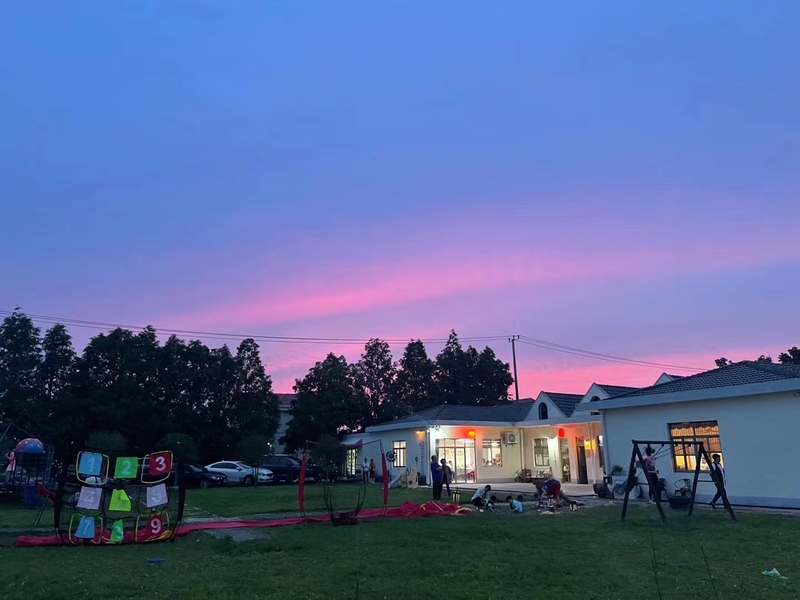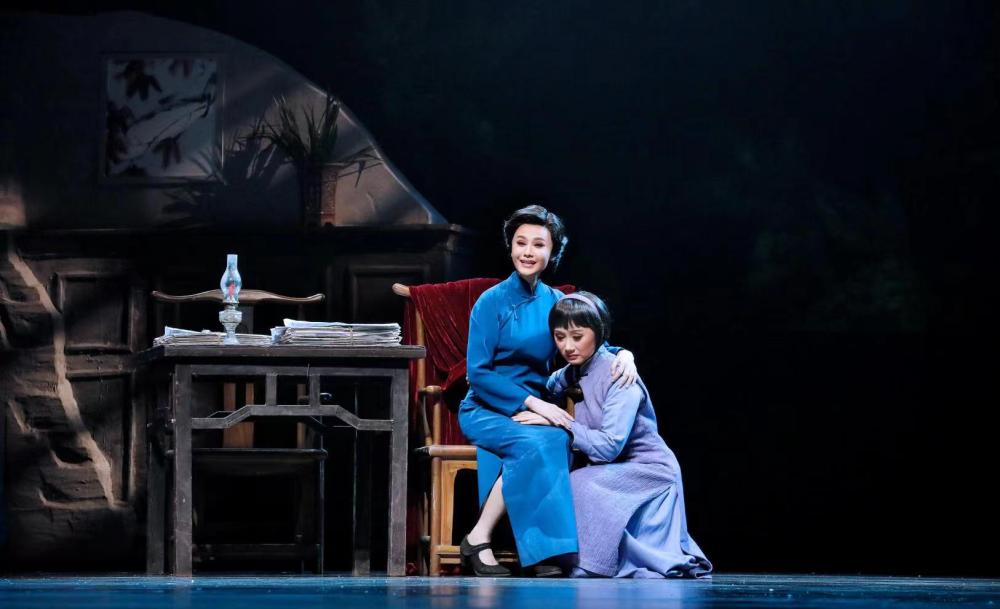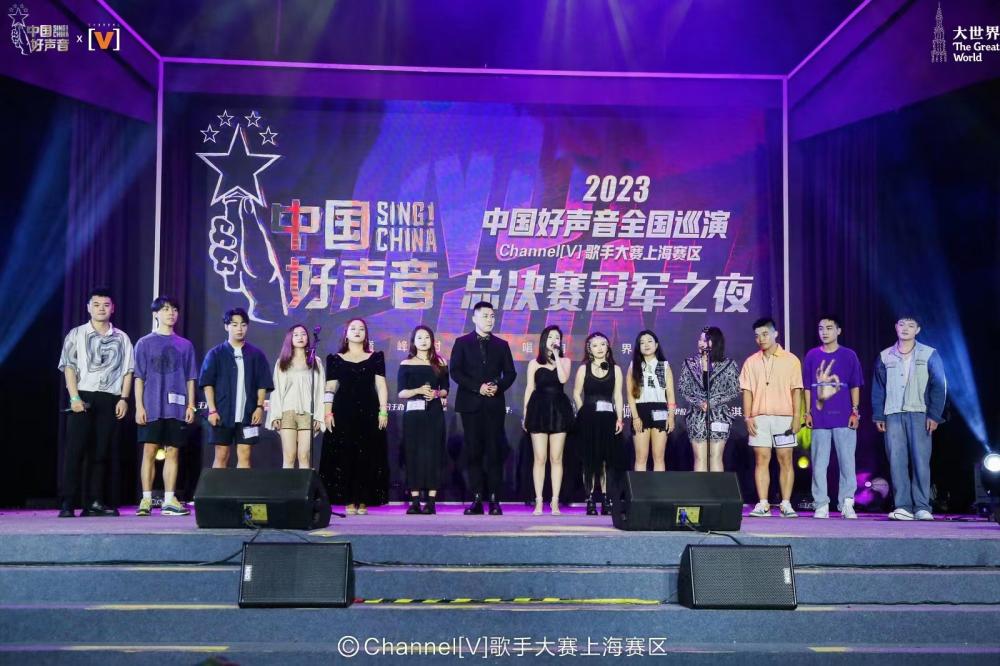Over a hundred years of legendary pursuit of light, "Memory of the Sea": The Shanghai family that emerged from the Nobel laureate Shanghai | Gao family | Shanghai
1
During the reign of Emperor Chongzhen of the Ming Dynasty, a family surnamed Gao moved from Shandong and settled in Zhangyan Town, Jinshan District, Shanghai. By the time of the fifth generation Gao Fengxiang, his family had gradually entered a moderately prosperous society, but due to the Jiangnan War and the destruction of his industry, he had to start from scratch. As the seventh generation of Gao Gui, who was in charge of the Gao family, he possessed both literary and brave qualities, and was a righteous person. In a relatively short period of time, he restored the vitality of the Gao family. And Gao Jinzhai is also the great grandfather of Gao Kun, the "father of fiber optics", a Chinese physicist and educator who won the Nobel Prize in Physics in 2009, and an expert in fiber optic communication and electrical engineering.
Gao Jinzhai focuses on educating his two sons, Gao Huang and Gao Xie. At that time, the Gao family already had a library called "Zangzhen Building", which included a series of books compiled by Gao Jinzhai with funding, including many works by Gu Guangyuan on astronomy and calendar. Gao Pingzi, the son of Gao Huang, later became one of the pioneers of modern Chinese astronomy, influenced by his childhood works on sightseeing. Mrs. He, the wife of Gao Jinzhai, often said, "I have always heard three sounds in my life, which are called the sound of a baby's cry, the sound of a loom, and the sound of a book."
Gao Xie was the grandfather of Gao Kun. In this generation, the Gao family became a prominent family in Jiangnan, with fields covering Jinshan and Pinghu in Zhejiang, and also involved in various commercial operations. From the late Qing Dynasty to the present, there have been many talented people, including gentry, scholars, poets, book collectors, revolutionaries, lawyers, scientists, architects, writers, translators... Nowadays, the original sites of these old houses, Shimei Mountain Villa, and Xianxian Mountain Villa, which record the time of farming and studying, have become part of the Zhangyan Industrial Park.
2
There is a low mountain in Zhangyan, which is said to be named "Qinwang Mountain" because Emperor Qin Shi Huang once climbed the mountain to observe the sea. The village here is also called Qinwang Village. Qinwang Village is located on the west side of Qinwang Mountain, surrounded by the Shanjing River. The old residence of the Gao family, also known as Qinshantou, is situated by the mountain and water. The houses are a complex of seven Dai houses, with Gao Huang, Gao Xie, and the other two families living together.
In the 20th year of the Guangxu reign, Gao Huang, who was studying hard, became a juren at the age of 27 and was known as the "last juren in Jinshan". Now the Jinshan District Library still has his rural examination vermilion paper. The official recognition and praise greatly enhanced the social status of the Gao family. However, Gao Huang refused to pursue official career and carefully managed the Gao family's industry, participating in the construction of rural areas and promoting the prosperity of the Gao family.
The Zhangyan water system is crisscrossing, so there are naturally many bridges. In the Bazi Village southwest of Zhangyan, there is a single stone bridge with "Bazi Bridge" and "Gao Shangzhi Hall Construction" carved on both sides of the bridge. This was originally a wooden bridge that had been repeatedly repaired and damaged. In 1936, Gao Huang funded the construction of a stone bridge and asked people to engrave the words "filial piety, loyalty, and trustworthiness" and "propriety, righteousness, integrity, and shame" on both sides of the stone bridge to encourage passersby.
At the age of 10, Gao Xie, also known as Xiao Gaohuang, was a renowned Confucian scholar, poet, collector, and leader of the Southern Society in Jiangnan. Like his elder brother, he was eager to learn and gradually gained a reputation among the Confucian community in Jiangnan. Along with Qian Mingshan from Wujin and Hu Shiyu from Kunshan, he was hailed as one of the "Three Great Confucian Scholars of Jiangnan".
In 1916, Gao Xie built the Xianxian Mountain Villa in the east of the old house, which was called the "new house" by the locals and the original house was called the "old house" of the Gao family. Gao Xie is enthusiastic about local public utilities. In 1923, the authorities cleared Zhang Jing and Gao Xie donated funds to the project, becoming one of the main responsible persons for the project. Zhangyan bridges are mostly made of wood, and over the past few decades, the Gao family has assisted in the construction of 38 stone bridges. The Gao brothers spared no effort in helping the disaster, organizing the infant and medical departments, etc., reflecting the true nature of the local enlightened gentry.
Due to their family influence and literary traits, the two brothers are particularly enthusiastic about cultural education. In the 31st year of the Guangxu reign, the Gao family established the first modern school, "Shimei School," located in Group 13 of Qinshan Village. "Shi Mei" is seen in the Book of Songs, meaning a sturdy tree trunk. The Shimei School offers courses in Chinese language, self-cultivation, mathematics, Chinese and foreign history and geography, style, natural resources, art, health, physical education, English, and more. It not only promotes traditional Chinese culture but also offers modern cultural education.
In this year, the Qing court abolished the imperial examination system, and China's education made various attempts to break through. The teachers hired by Shimei Academy were mostly renowned scholars and scholars at that time, as well as young international students who embraced new trends, bringing a modern atmosphere to Shimei Academy. Gao Huang personally taught self-cultivation courses, while Gao Xie taught literature and history. There are over 40 students in the school, and Yao Guang and Gao Pingzi were the first graduates of the school at that time, and they were both admitted to Shanghai Zhendan University.
In the 34th year of the Guangxu reign, Gao Huang also planned to build the Yinbin School, which was free of tuition fees for rural children, in the Kongjiaque adjacent to the Shantang River to the south of the Gao family. "Yin Bin" comes from the "Book of Documents", which means to regard students as the rising sun and guide them to succeed. The expenses for rural children are borne by the Gao brothers, who have trained a group of knowledgeable talents for the local area.
In 1906, Gao Xie, Huang Gongxu, Ye Shurun, and others closely followed the educator Yan Xiu to establish the Society and the School of Education Promotion. Gao Huang was appointed as the first general director of the School of Education Promotion in Jinshan County. The Gao brothers devoted their entire lives to promoting the modernization and transformation of local education, and devoted themselves wholeheartedly to ideological and cultural construction with advanced cognition.
Gao Xie devoted his entire life to academic and literary pursuits, and the tradition of the Gao family's collection of books has also been inherited. He collected and printed buried rural literature and writings of ancient sages from various sources, with a collection of over 300000 volumes, especially obsessed with the Book of Songs, with a collection of over a thousand related documents. In 1937, the Japanese army invaded and landed in Jinshan. Gao Xie fled to Shanghai and collected more than 380 boxes of books. Except for more than 40 boxes of documents such as the Book of Songs and a few other scriptures, they were first transported to Shanghai, and the rest were looted completely.
In 1948, at the age of 70, Gao Xiexin became increasingly impoverished due to the turmoil of his family and country. However, he even made full donations to support Punan Middle School. Only three years later, Gao Xiexin was unable to pay rent.
In 1956, Gao Xie donated the remaining 2614 editions of the Book of Songs and 33 proofread manuscripts, as well as 153 volumes of local chronicles, to Fudan University. This batch of books had a complete variety of versions, and the remaining collection of books was donated to the Shanghai Library as early as the early days of Shanghai's liberation.
3
Gao Tianmei, also known as Xu, was the nephew of Gao Xie and grew up in the old residence of the Gao family. She, along with her cousin Gao Xie and younger brother Gao Zeng, were renowned for their poetry and literature, and were known as the "Three Heroes of a School". In 1904, Gao Tianmei went to Tokyo Law and Politics University to study and explore the path of anti Qing and national salvation. In 1905, Sun Yat sen arrived in Japan from Europe. Gao Tianmei, Huang Xing and others met with Sun Yat sen to prepare for the establishment of the Chinese Chinese Revolutionary League, which was the first group to join, and also the first Shanghai member of the Chinese Revolutionary League. In the spring of 1907, Gao Tianmei returned to Jinshan Township and soon moved to her new home in Anxia, Zhangyan Town, naming her residence "Wanmei Hualu".
A hundred years later, at the site of Gaotianmei's former residence by the Niuqiao River in the southeast of Zhangyan Town, the four characters "Wanmei Hualu" in seal script above the door are still clear, and the old door ring is quietly hanging there. In June 1909, Gao Tianmei sent a letter inviting Chen Qubing to establish the Southern Society together. Here, he completed the declaration of the establishment of the Southern Society, and Chen Qubing drafted a notice for its establishment, while Liu Yazi wrote the regulations. The establishment of Nanshe has opened up a new path for "using literature to enlighten the people, save their morals, change their hearts, and boost their morale.".

The new generation of the Gao family, the ninth generation with the character "Jun" - Gao Huang's three sons Jun Ping, Jun Ding, and Jun Shi, and Gao Xie's four sons Jun Jie, Jun Fan, Jun Xiang, and Jun Bin - all emerged exceptionally, known as the "Seven Gentlemen of the Gao family".
Gao Junping is Gao Pingzi, a modern Chinese astronomer who also enjoys a high reputation in the field of world astronomy. Zhang Heng, an astronomer from the Eastern Han Dynasty, also known as Pingzi. Gao Junping used his nickname "Pingzi" to encourage himself and eventually became the earliest scholar in China to participate in international longitude joint observations. He was the founder of China's first modern astronomical observatory, the Purple Mountain Observatory, and the pioneer of explaining China's traditional astronomical calendar research direction with modern scientific knowledge. In 1983, the International Astronomical Union named a circular crater on the moon "Gaopingzi Crater". Now, the "Gaopingzi Cultural Research Center" is being established in its hometown of Zhangyan Town.
Gao Pingzi is proficient in both Chinese and Western studies, with both literature and science. He has profound expertise in poetry, calligraphy and painting, and seal carving. He is proficient in French and his translated Hugo's love poem "To That Shu" has been widely circulated for a while.
Gao Junding, the second brother of Gao Pingzi, was skilled in poetry and prose, and later mainly devoted himself to the management of the Gao family's business. Gao Junshi, the third brother of Gao Pingzi, was also talented, and both Gao Junbin, the fourth son of Gao Xie, were listed as the "Seven Sons of Zhangyan".
In the lineage of Gao Xie, his eldest son Gao Junjie was a poet. After the establishment of the People's Republic of China, he served as a librarian at the Shanghai Museum of Culture and History. The second son, Gao Junfan, once served as the president of Songjiang Construction Bank. In 1933, he operated the "Dayou Farm" for rice and seedling cultivation. The father of Gao Kun, the third son, Gao Junxiang, studied law at Nanyang University. After graduation, he studied abroad at the University of Michigan in the United States and became the first Chinese legal doctor to study in the United States. After returning to China, he became a famous lawyer in Shanghai in the 1940s. The fourth son, Gao Junbin, graduated from Shanghai Jiao Tong University with a major in Railway Management and previously worked at the Shanghai Railway Bureau.
Photo by Gao Yan of Gao Tianmei's Former Residence
Gaoyan Photography of Wanmei Garden
four
Gao Kun and Gao Wu are the two sons of Gao Junxiang. Kunwu is a mountain name recorded in ancient books, and the iron produced can be used to forge swords.
At the age of 10, Gao Kun attended Shanghai World School. After graduating from the University of Hong Kong, he went to the UK to study. Before going abroad, his grandfather Gao Xie encouraged him to "strive for excellence in his studies". In 1996, Gao Kun was appointed as an honorary professor at Tsinghua University and Beijing University of Posts and Telecommunications, making important contributions to the cultivation, scientific research, and practical application of optical fiber talents in China. In 1996, Kao Kun was elected as a foreign academician of the Chinese Academy of Sciences. In the same year, the Zijinshan Observatory of the Chinese Academy of Sciences named the asteroid with the international number of "3463" as "Kao Kunxing". In 2015, Gao Kun was awarded the Honorary Fellow of the Hong Kong Academy of Sciences. His younger brother Gao Wu is a tenured professor at the Catholic University of Washington in the United States, engaged in research in fluid mechanics.
After more than a hundred years of historical changes, the Gao family began to awaken their thoughts, adhering to the ancestral teachings of valuing literature and education, and inheriting poetry and etiquette. Although several generations have different social roles, they have also embarked on the family's journey of pursuing glory.




